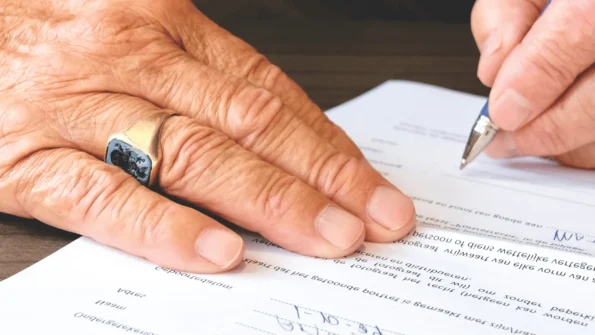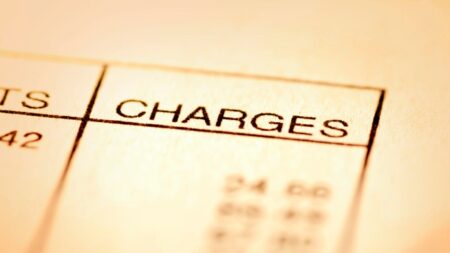The CRA requires employed individuals to report their income taxes; the same is required of people who have self-employed and professional income taxes in Canada. To do this, they will need the T2125 form.
The CRA uses the T2125 form to calculate tax for self-employment and professional income. It is also required in the T1 form for annual personal income tax.
If you have a business, whether registered or not, in Canada and you are a taxpaying citizen, you need to know more about the T2125 form and how it works for you.
What is a T2125 Form?
The T2125 form is used by Canadian taxpayers who own a business and are earning professional income. It helps them calculate their gross income and net income which are required when completing the federal income tax and benefit return (T2) for every tax year.
Note that you must include the T2125 form in your tax return. If you have both business or professional activities as a Canadian taxpayer, you will need to complete a separate form for each of them.
Any of the following people need the T2125 form;
- Sole proprietors
In this case, the sole proprietor has an unincorporated business and can be any of the following; – Businessperson, a professional commission salesperson, and a home day-care owner. You must also fill this form if you are in partnership with a business person or a business professional.
Farmers and fishers will need form T2024 (Statement of Farming Activities) and form T2121 (Statement of Fishing Activities), respectively.
The CRA considers you to be self-employed if you have a business relationship with a payer, and you have the right to determine where, when, and how your work is done.
Reporting your Income
You must start reporting your income and deducting your expenses as soon as your business commences. Note that researching how to start a business is not considered the start of your business.
Your business is believed to have started when you begin some significant activities that are a regular part of your business needed to get the company going, like purchasing equipment or goods.
How to Report Your Income
Income is reported based on a fiscal period between the day your business commences and the day it ends for its business year. It cannot be longer than 12 months but can be shorter.
Most individuals use a December 31 fiscal year, but if you own one that does not end on December 31, you will need the form T1139 (Reconciliation business income for tax purposes).
There are currently two methods for reporting your income;
- Cash method (for farmers, fishers and self-employed commission agents)
- Accrual method (for other self-employment income)
If you want to change your reporting income from accrual to cash, you can use the cash method when you find your net income tax return and include a statement to show each adjustment made to your income and expenses as each technique is different.
If you want to change from cash to accrual, you will need to do the following;
- Get permission from your tax service office.
- Request for the change in writing before the date you are to file your return.
- Explain the reason for the change in the letter
- You must include a statement to show each adjustment made to your income and records.
How to Obtain the T2125 Form
You can get the T2125 form from the CRA website. You should download and print the paper as it is easier for calculation. You can also make use of the pdf fillable version.
How to Fill the Form T2125
The T2125 form has five sections, they include:
- Identification
In this section, you will fill it as it applies to your business. You will be required to provide;
- Your program number as assigned by the CRA,
- Your fiscal period
- Your industry code (the one that best describes your business)
- Your tax shelter identification number (if any)
If you run a partnership, you will need to provide your partnership business number depending on the unit percentage of the affiliation and the person or firm’s name and address that prepared your form.
- Internet Business Activity
This section is for people who earn income from their business web pages or websites. To fill this section, you need the following information:
- Number of web pages and websites your business earns from
- Address of your page and site (if you have more than five websites, you will provide the link with the highest internet income)
- Address of pages that generate income if you don’t have a website
- Percentage or an estimate of internet generated income.
- Income
This section has four parts (A, B, C and D). Part A is for business income alone, including self-employed commission income. In part A, you will provide;
- All sales details
- Money received
- Projected money to be received
- Services or other goods with either bartering or monetary value
- GST/HST (collected and collectible), amongst others
Part B is for professional income, and you will also enter information as stated in section A as it applies to you, including the value of your WIP (Work in Progress). WIP refers to goods or services that have not yet finished providing income at the end of your fiscal year.
Part C is for adjusted sales or adjusted professional fees, reserves deducted from the previous tax year and total income from other sources. At the same time, part D is required only for businesses that buy goods for resale or make goods for sale.
You are to enter only the business parts of the firm’s costs, including your direct wage costs (if you have employees), your purchase during the year and your gross profit.
The last two sections are the most important ones to calculate your gross income and net income. Gross income is the entire amount of money you earn in a fiscal year, while your net income is the amount you have left after deducting some expenses. Some of the costs include but are not limited to the following:
- Advertising
- Meals and entertainment
- Bad debts
- Insurance
- Interest and charges
- Business races
- Office expenses
Calculating your gross income will require you to add interests on loans you gave out to your total sales revenue after deducting the cost of goods sold and refunds (if any). Your net income will then be the remaining profit after you subtract your expenses from the gross income.
Click here to find out more about the form T2125 and how to calculate your net income.
Keeping Records
The law expects you to keep records of all your transactions. This is to enable you to support your claims with evidence.
Your record should include an account, an agreement, an invoice, a statement, a return and other proof containing details of your business history, whether in writing or other forms.
You are also to keep a record of your daily income and expenses. Don’t forget to keep your duplicate deposit slips, bank statements, and cancelled cheques. If you have more than one business, you are to have separate records for each.
If you keep computerized records, ensure that they are straightforward and easy to read. You are not to send your documents to the CRA with your income tax return, but just for safe-keeping in case, the CRA requests to see them.
You should have complete and well-organized records to avoid penalties that may arise from not keeping adequate records. You should also retain records of your business’s gross income, whether from cash, property or services.
The income records should include the date, amount and source of the income. All entries should be supported with original documents such as sales invoices, cash register tapes, receipts, bank deposit slips, fee statements and contracts.
If you are a day-care provider, you will need to issue receipts to parents of the children you care for as they will need them t file their tax return. The permit must include;
- Name of the recipient
- Name of the child of the recipient of the receipt
- The amount you received for your services
- The period (start date to end date) you provided the services
- Your name
- Your address
- Your SIN
- Your signature
- The date you signed the receipt
You must also keep records of your expenses and get receipts or vouchers when you purchase something for your business. The ticket must show;
- The date of purchase
- Name and address of the seller or supplier
- Your name and address
- Full description of the goods and services
- Vendor’s business number if they are GST/HST registrant
Conclusion
The form T2125 is a form for calculating gross income and net income for self-employed taxpayers in Canada and professionals. You are required to complete it and send it along with your income tax and benefit return. It entails many expenses and costs, but you will find all you need with the comprehensive CRA guide.












